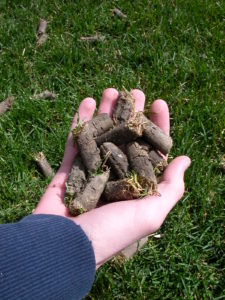 What is Aeration?
What is Aeration?
Grass roots must have air (oxygen) to be healthy. When soils become compacted there is little room for air or water to be present. Under ideal conditions the soil should be composed of 50% solids, 25% air and 25% water. Core aeration removes several plugs per foot to allow air and water to enter the soil, resulting in a compaction-reducing swelling of the soil. Aeration can benefit every lawn. Aeration helps heavily used lawns and lawns growing on compacted soils by improving the depth and extent of turf grass rooting, allowing better water uptake, enhancing fertilizer use and speeding up thatch breakdown. Most lawns are subject to thatch. If thatch is left un-managed, it can lead to serious maintenance and pest problems. Core aeration reduces thatch accumulation, minimizes its buildup and modifies its makeup by incorporating soil into the thatch.
How Much Does it Cost?
The average size lawn costs about $65.
How Frequently Should I Aerate?
Annual aeration is beneficial for most lawns. Lawns growing on heavy clay or subsoils and lawns exposed to intense use benefit from more than one aeration each year. Both spring and fall are ideal times to aerate. In most cases, spring aeration is performed between March and May. Fall aeration is done in early fall. Aeration before or at the time of late season fertilization enhances root growth responses and improves spring greenup and growth. With repeat aerations over time, your lawn will show enhanced heat and drought stress tolerance.
Don’t expect miracles from a single aeration, particularly on lawns growing on extremely poor soils. Most lawns benefit from annual aeration. Lawns that receive this care will be healthier, more vigorous, easier to maintain and have fewer pest problems than lawns that are neglected.
Benefits of Aeration
Core aeration helps the lawn’s health and vigor, and it reduces maintenance requirements. The following are other benefits of core aeration:
- Enhanced Soil and Fertilizer Uptake
- Improved Rooting and Air Exchange
- Reduced Water Runoff
- Thatch Breakdown
- Better Heat and Drought Stress Tolerance

